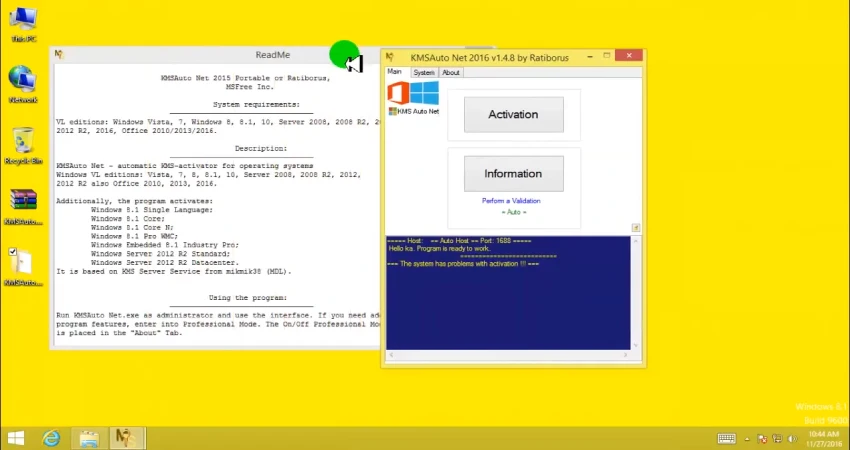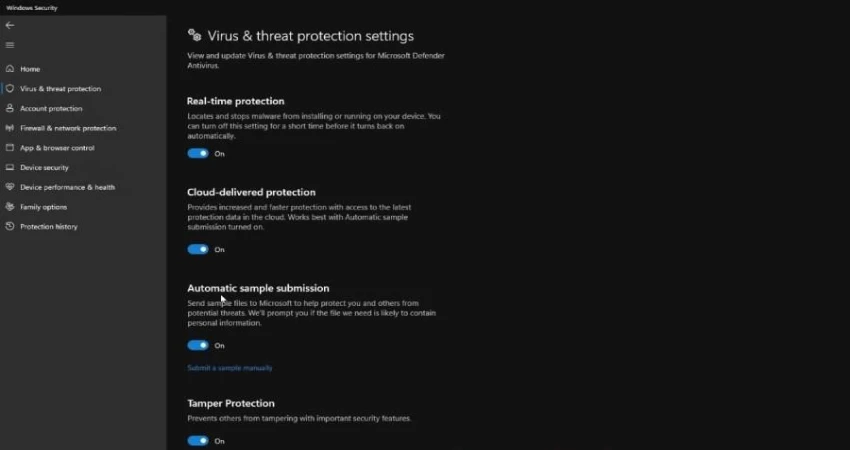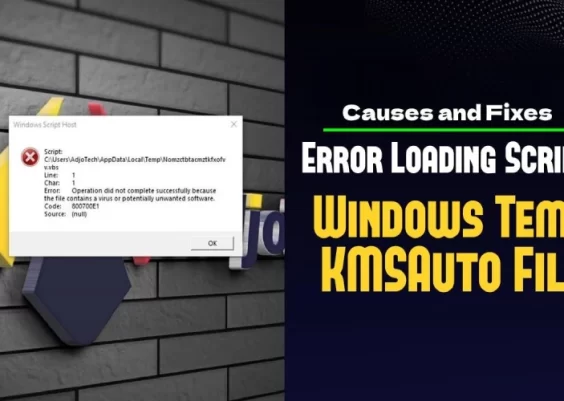KMSAuto Net Activator is a popular tool used by many to activate Windows and Office products without purchasing a legitimate license. But when you try to use it, you may encounter issues with your antivirus software flagging it as a potential threat.
This is a common occurrence due to several reasons, such as the tool’s unrecognized publisher status, its ability to make unauthorized system modifications, and behavior-based detection methods used by antivirus programs.
Although KMSAuto Activator itself isn’t inherently malicious, its actions resemble those of harmful software, triggering alarms in antivirus programs.
We will discuss the reasons antivirus software detects KMSAuto Net Activator as a threat and offer practical solutions to prevent it from interfering with the activation process.
Why Antivirus Software Detects KMSAuto Net Activator as a Threat?

KMSAuto Net Activator gets flagged by antivirus software primarily for a few reasons, such as:
Unrecognized Publisher
In the event that you search for KMSAuto free download for Windows 10 or other versions, or for Office, and download the tool, your security software may flag it as an unrecognized publisher.
This designation stems from the fact that KMSAuto isn’t affiliated with any official software distributor like Microsoft.
Antivirus programs are engineered to protect your system by identifying and isolating unknown or suspicious software, and KMSAuto fits into this category.
While KMSAuto serves a practical function in activating Windows and Office products without a direct purchase, its origins raise red flags in the eyes of security systems.
The software simulates a Key Management Service (KMS) server, which is appealing to those looking to save on licensing fees.
However, because it lacks validation from a recognized authority, its legitimacy is often questioned.
Antivirus software relies heavily on the reputation of the publisher as a key factor in determining software safety. The absence of a trusted source makes it challenging for security tools to grant KMSAuto a clean bill of health.
Consequently, this cautious approach leads to its classification as a potential threat, reflecting the inherent risk associated with unrecognized software publishers.
Unauthorized System Modifications
KMSAuto Net Activator’s functionality hinges on its ability to modify system files and settings, which raises immediate concerns for security software.
This tool operates by altering critical system components to replicate the KMS activation process necessary for activating Windows and Office products.
While these modifications are essential for your software’s functionality, they mirror behaviors typically associated with malicious software.
Antivirus programs are designed to protect your system by flagging actions that deviate from normal user behavior.
Since KMS Auto Net Activator alters system files, which is a hallmark of many malware programs, security software often identifies it as a potential threat. This response stems from the need for vigilance against unauthorized changes that could compromise system integrity.
Behavior-Based Detection
KMS Auto Net Activator, designed to mimic a KMS server, alters system files and bypasses standard activation processes, which inevitably triggers alerts from behavior-based detection systems.
Even though the KMSAuto official activator isn’t fundamentally malicious, its actions resemble those of Trojans and other malware. By modifying essential system files, it exhibits behaviors commonly associated with harmful software.
This is precisely why your antivirus software flags it; it’s programmed to identify and neutralize any application that demonstrates suspicious activity, regardless of intent.
Ethical and Legal Implications
Antivirus software doesn’t just rely on technical aspects to flag threats; ethical and legal evaluations are significant factors as well. KMSAuto Net Activator is often flagged because it circumvents Microsoft’s activation protocols, violating the company’s licensing terms.
By using this tool, you’re not just activating your software without payment; you’re also engaging in practices that undermine the ethical standards tied to genuine software usage.
Antivirus programs are designed to protect not only systems but also users from participating in illegal activities. When KMSAuto Net Activator allows you to bypass legitimate software licensing agreements, it raises immediate red flags for these security tools.
Steps to Block Antivirus from Detecting KMSAuto Net Activator

To prevent your antivirus from flagging KMSAuto Net Activator, you can take two key steps, which are:
Temporarily Disable Antivirus Protection
When you’re looking to run KMSAuto Net Activator without interruptions, temporarily disabling your antivirus protection is a practical solution. This approach allows you to activate your Microsoft Office or Windows products smoothly.
For Windows users utilizing Windows Defender, the process is straightforward. Start by opening the Start menu, typing “Windows Security,” and selecting it from the results.
Once in the Windows Security interface, navigate to Virus & Threat Protection. Under the Virus & Threat Protection Settings, choose Manage Settings and toggle off Real-Time Protection. This action stops the antivirus from scanning files as you execute the activator.
If you’re using third-party antivirus software like Norton, McAfee, or Avast, the steps are generally similar. Look for the antivirus icon in your system tray, right-click it, and select the option to Disable or Pause protection.
Most programs will prompt you to specify how long you want the protection disabled — options usually range from 10 minutes until the next restart.
Once you’ve disabled the antivirus, you can run KMSAuto Net Activator without interference. Remember, though, that this leaves your system vulnerable, so re-enable your antivirus promptly after activation.
Add KMSAuto Net Activator to Antivirus Exclusions
Adding KMSAuto Net Activator to your antivirus exclusions is a strategic way to ensure smooth operation without compromising your system’s security. By whitelisting the activator, you prevent your antivirus from flagging it as a potential threat, which can disrupt its execution.
For Windows Defender users, start by maneuvering to Virus & Threat Protection within the Windows Security settings. Scroll down and select Manage Settings under the “Virus & Threat Protection Settings” section.
Click on Add or Remove Exclusions, then choose Add an Exclusion. Depending on where KMSAuto Net Activator is stored, select either File or Folder, browse to its location, and add it to the exclusion list.
For those using third-party antivirus software, the procedure is similarly straightforward. Open your antivirus program and locate the settings or options menu. Look for a section labeled as Whitelist, Exclusions, or Exceptions.
Here, you can add the file or folder location of KMSAuto Net Activator to the exclusion list. This method is preferable to entirely disabling antivirus protection, as it maintains the security of your system while allowing uninterrupted use of the activator.
Safely Use KMSAuto Net Activator Without Interference
To summarize, while KMSAuto Net Activator can trigger antivirus warnings due to its suspicious behavior and unrecognized status, it’s not inherently harmful. The activator mimics KMS server actions, which is why it is flagged.
If you need to use KMSAuto, temporarily disabling your antivirus or adding it to the exclusions list can help prevent interruptions. Just be mindful of the security risks when doing so, and always re-enable your antivirus protection afterward.
You can activate your Windows or Office products smoothly by following these steps while minimizing potential threats to your system.




